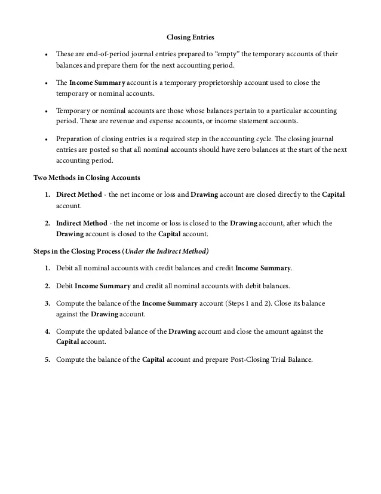Content

Reading down the statement, operating expenses, including rent and salaries, are shown, for a sum of $88,500. Subtracting those operating expenses from the gross profit leaves the business with $61,500 in operating income, or profit, that it can use for reinvestment, expansion, or miscellaneous nonoperating expenses. Dividing that $61,500 by the revenue of $270,000 and multiplying by 100 gives an operating profit margin of approximately 22.8%.

This ratio is important to both creditors and investors because it helps show how strong and profitable a company’s operations are. For instance, a company that receives 30 percent of its revenue from its operations means that it is running its operations smoothly and this income supports the company. It also means this company depends on the income from operations. If operations start to decline, the company will have to find a new way to generate income.
How to Determine Changes in Operating Working Capital
Needless to say, this https://intuit-payroll.org/ is valuable to creditors and investors as it helps establish a company’s operations’ strength and profitability. For example, if a company gets 30% of its earnings from its operations, that means management has been effective in running its operations and the income is more than enough to keep the company going. It shows as well that the company relies on its operations’ earnings. Should operations go on a downtrend, the company will have to look for ways to earn revenues. ROE is net income divided by total shareholders’ equity.ROE is also the product of return on assets and financial leverage.ROE shows how well a company uses investment funds to generate earnings growth.
- In a survey of nearly 200 senior marketing managers, 69 percent responded that they found the “return on sales” metric very useful.
- He is a CFA charterholder as well as holding FINRA Series 7, 55 & 63 licenses.
- To find the gross profit, we need to deduct the cost of goods sold from the net sales.
- For example, if your relative has a small business and you helped them look at their profit margins to find areas where cutting costs would have a big impact, mention that.
- Such lag times in accounts receivable collections can mean that a business has high profit margins, but is nonetheless unable to pay its bills on time.
We’ll first list the financial assumptions related to the three major inputs, which are revenue, cost of goods sold, and operating expenses. The historical income statement for Apple can be found below, with the operating profit line item highlighted. In this case, the company earns $0.40 in operating income for each $1.00 of revenue generated. The interest coverage ratio is a debt and profitability ratio used to determine how easily a company can pay interest on its outstanding debt.
Operating Profit Margin Formula Operating Profit Margin Examples Operating Profit Margin vs. Net Profit Margin?
To arrive at the operating profit margin, we’ll divide the $4 million in EBIT by the $10 million in revenue and multiply by 100, which comes out to an operating profit margin of 40%. EBITDA and Operating Margin are different names for the same concepts. However, EBITDA includes taxes, depreciation, amortization, and interest, whereas operating margin excludes the following.
How do you calculate operating ratios?
The operating ratio is calculated by dividing a company's total operating costs by its net sales.
Conversely, a company that only converts 3 percent of its revenue to operating income can be questionable to investors and creditors. GM was making more money on financing cars than actually building and selling the cars themselves. The net profit results from the whole income and expenses rendered by a company. But if the net profit margin is higher, it doesn’t ensure the efficiency of a company.
How do you calculate the operating margin ratio?
It’s calculated by determining the difference between revenue and the cost of goods sold , divided by the revenue. Its cost of goods sold is $5 million and its selling and general administrative (SG&A) expenses are $2M. Ultimately, cash flow is the best predictor of a business’s value. There are a few basic steps firms can take to improve their operating margin.
- Larger margins mean that more of every dollar in sales is kept as profit.
- For example, if a company gets 30% of its earnings from its operations, that means management has been effective in running its operations and the income is more than enough to keep the company going.
- Operating Income otherwise known as EBIT (Earnings Before Interest & Taxes), measures a company’s profits after deducting operating expenses, but before interest payments and taxes are accounted for.
- After you’ve collected the data and calculated profit margins in a spreadsheet, it’s easy to draw a picture to tell the story better.
- As seen with Netflix, the best way to evaluate a company’s operating profit, is to measure it over time, and see how it is trending.
- The ROA is entirely contextual to the company, the industry and the economic environment.
BEP disregards different Determine Operating Profit Margin Ratios situations and degrees of financial leverage while still providing an idea of how good a company is at using its assets to generate income. The distinction between EBIT and Operating Income is non-operating income. Since EBIT includes non-operating income , it is a more inclusive way to measure the actual income of a company. However, in most cases, EBIT is relatively close to Operating Income. The higher the BEP ratio, the more effective a company is at generating income from its assets.
A higher operating margin ratio is usually indicative of a more profitable company. However, it is important to consider other financial ratios when making this determination. Additionally, a lower operating margin ratio does not necessarily mean that a company is in trouble. It is important to analyze other aspects of the company’s financials.
This is Netflix’s consolidated income statement for the year ending December 31, 2019. Using the provided assumptions, we can calculate the operating profit for each company by subtracting OpEx from gross profit. For example, if a company has generated $10 million in revenue with $4 million in COGS and $2 million in operating expenses (SG&A), the operating profit is $4 million.


